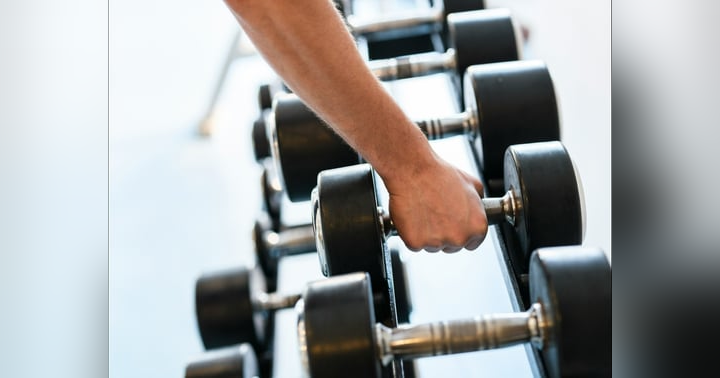Dynamic Stretching for Rucking: Your Pre-Ruck Warm-Up Guide

Getting ready to start rucking? Before you throw on that weighted backpack and head out, there's something crucial you need to do that most ruckers skip: dynamic stretching. In this guide, I'll break down why stretching matters for rucking performance, the difference between dynamic and static stretching, and exactly how to prep your body for a successful ruck with the best pre-ruck warm-up routine.
Why Dynamic Stretching is Essential for Rucking Performance
Let's be real: rucking isn't just walking with weight. It's a full-body fitness challenge that demands mobility, stability, and endurance from muscles you might not even think about. When you strap on that weighted ruck pack, your body has to adapt to:
- Altered posture and weight distribution
- Increased demand on your posterior chain
- Greater stress on your feet, ankles, and calves
- Continuous core engagement for stability
- Extended periods of repetitive motion
Skip the pre-ruck stretching routine, and you're setting yourself up for tight hips, cranky shoulders, and that dreaded lower back ache that can cut your ruck training short. I learned this the hard way during my early rucking days when I thought I could just power through without proper rucking preparation.
Dynamic stretching for rucking isn't just injury prevention (though that's huge). It's performance enhancement. When your muscles can move through their full range of motion, you'll maintain better form, generate more power, and simply feel better throughout your entire ruck workout.
Dynamic vs. Static Stretching for Ruckers: What's the Difference?
Here's where a lot of people get confused about rucking warm-ups. Not all stretching is created equal, and timing matters for optimal rucking performance.
Static Stretching is what most of us learned in high school PE class. You hold a stretch position for 15-30 seconds....think touching your toes or holding your heel to your glutes. Static stretching is fantastic for improving overall flexibility and is perfect for your post-ruck cool-down routine.
Dynamic Stretching is active movement that takes your joints and muscles through their range of motion. Instead of holding positions, you're moving in controlled patterns that mimic the rucking activity you're about to do. Think leg swings, arm circles, or ankle rotations.
For pre-ruck warm-up preparation, dynamic stretching is your best friend for rucking fitness. Here's why:
- Increases blood flow to working muscles for better rucking performance
- Raises core body temperature for optimal movement efficiency
- Activates your nervous system for coordinated rucking movement
- Improves joint mobility without reducing muscle power
- Mentally prepares you for the rucking workout ahead
Static stretching before rucking? That's actually counterproductive for rucking performance. Research shows it can temporarily reduce muscle strength and power—exactly what you don't want before strapping on a weighted rucksack.
The Best Dynamic Stretching Routine for Rucking
This simple 5-6 minute dynamic warm-up routine hits key muscle groups ruckers need. Do this rucking warm-up right before you start walking, and your body will thank you.
1. Ankle Circles for Rucking Mobility
- Lift one foot slightly off the ground
- Make slow, controlled circles with your ankle
- 8-10 circles each direction, each foot
- Targets: Ankle mobility, calf activation for rucking
2. Leg Swings - Essential Pre-Ruck Movement
- Hold onto something stable for balance
- Swing one leg forward and back in a controlled motion
- 10-12 swings each leg
- Targets: Hip flexors, hamstrings, glutes for rucking power
3. Shoulder Raises - Prepare for Ruck Pack Weight
- Stand tall with arms at your sides
- Raise shoulders up toward your ears, then lower
- 10-12 slow, controlled raises
- Targets: Trap activation, shoulder mobility for pack carrying
4. Arm Circles - Shoulder Preparation for Rucking
- Small circles forward (10), then backward (10)
- Large circles forward (10), then backward (10)
- Targets: Shoulder mobility, rotator cuff activation
5. Butt Kicks - Dynamic Leg Preparation
- Stand in place and kick heels toward your glutes
- Alternate legs in a controlled rhythm
- 15-20 total kicks
- Targets: Quad flexibility, hamstring activation for rucking stride
Make It Stick
Here's my advice: build this routine into your pre-ruck ritual, just like checking your gear or filling your water bottle. It only takes 5-6 minutes, but the payoff in comfort and performance is massive.
I do this 5-exercise routine before every single ruck, whether it's a 2-mile neighborhood walk or a 12-mile challenge event. My joints feel looser, my stride feels more natural, and I can maintain good posture longer under load.
Hear More on The Rucker's Edge Podcast
Want to dive deeper into ruck preparation, gear selection, and training strategies?
Disclaimer
I'm not a medical professional. This post reflects my personal experience with rucking preparation. Please consult your doctor, physical therapist, or certified fitness professional before beginning any new exercise program...especially if you have existing injuries or mobility limitations.
Final Thoughts
Dynamic stretching isn't glamorous, but it's one of those small things that makes a huge difference in your rucking experience.
Think of it as priming the pump. You wouldn't start your car on a cold morning and immediately floor it, right? Your body deserves the same respect.
Five minutes of dynamic movement can be the difference between a strong, comfortable ruck and one where you're fighting tightness and discomfort from mile one.
Trust me on this one. Your future self will thank you.
Ruck on,
Spencer
Host of The Rucker's Edge Podcast
Photo by Scott Broome on Unsplash

